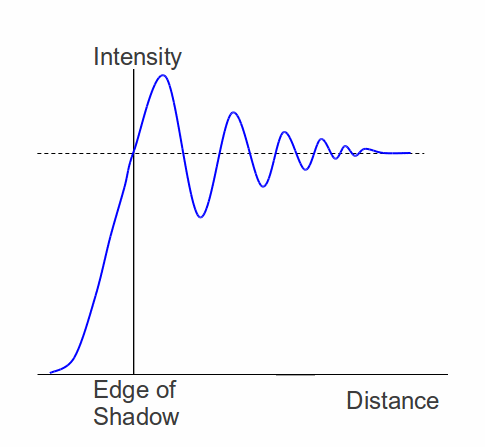Fresnel Diffraction
Fresnel diffraction is produced when light from a point source meets an obstacle. Diffraction occurs at the edges of the object and fringes of light are produced. Fresnel diffraction can be observed with the minimum of apparatus – a razor or thin wire. If a razor blade is placed between the observer and a point source of monochromatic light, dark and bright diffraction fringes can be seen in the edges of the shadow. If a pinhead, is used a spot of light will be seen in the centre of the shadow.
The diffraction observed is independent of the density of the obstacle: a spider's web gives the same diffraction pattern as a wire of the same thickness, inconsistent with Newtons particle model of light. The existence of a bright spot within the centre of the shadow of a small steel ball was also consistent with the wave model of light. If the intensity of light is plotted against distance for points close to the shadow edge results like those shown in the diagram will be obtained. 
Fresnel diffraction with a double slit will produce two single slit patterns superimposed on each another, as observed in Young's slit experiment: the diffraction effects are observed as well as those due to the interference of the two sets of waves.